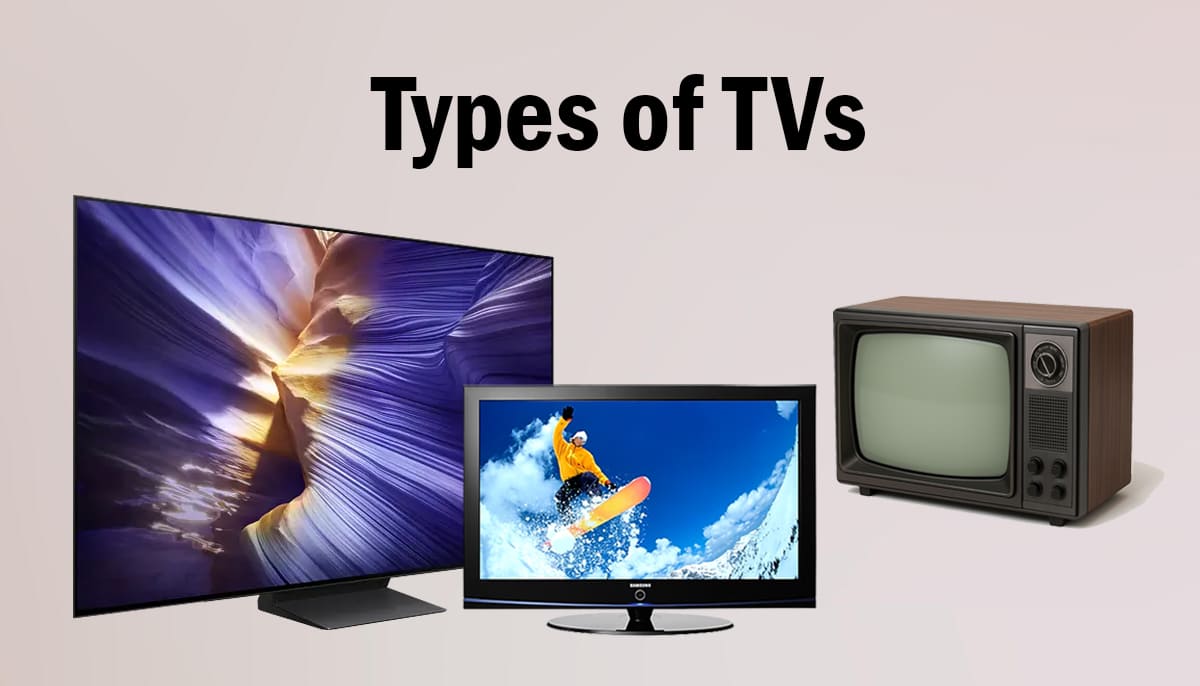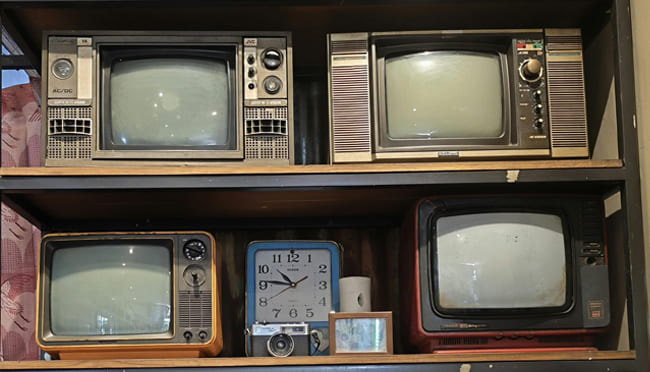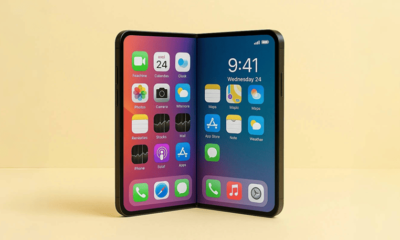Tech News
Types of TVs – Know the Different Television Options
Published
2 months agoon

Previously, buying a television was simple because people didn’t have a lot of choices, except different brands, so they picked whichever was most popular. But things have changed over time because now you can choose from a range of television types, each of which are unique in its way and offer various benefits.
The TV market at present has diverse types of television from LCDs and LEDs to OLEDs, each offering stunning picture quality, and promising an enhanced viewing experience, regardless of the size chosen.
Today, buying a television is not just about the brand, but the technology, and unless you are familiar with the types, picking the right model can be difficult, or you can end up with the wrong one.
Some types offer better colors, and others shine in darker rooms, which is why understanding how the technology works is important, so you can make an informed decision without a loss. In this guide, we will tell you about types of tv and how they work, so you can choose a model suitable for your needs.
LCD TV
LCD TVs took flat-screen technology to the next level because they are not only lighter and thinner, but you can also handle them better than older models, making them popular among buyers.
Early LCD TVs used a fluorescent backlight to create images and were known for their bright displays, but since the backlight was always on, producing true black color was a problem even when parts of the screen were supposed to be dark.
Difference Between 1080i & 1080p
LED TV
With TV makers looking for ways to improve technology, they found a better light source called LEDs, which instead of CFLs, uses light-emitting diodes and enhances backlighting better than LEDs.
This not only made TVs more energy-efficient and thinner, but they can handle better picture quality as well. Switching to LED lighting has many benefits because it lets manufacturers explore smart backlighting, edge lighting, and local dimming techniques for better performance and contrast.
Mini LED TV
Improving the LCD technology was not possible without fixing the backlighting system and that’s where Mini-LED was introduced to resolve the issue. Even these types uses the same structure that powers QLED, but the size and number of LEDs use differ.
Mini-LEDs are much smaller and allow manufacturers to pack thousands of tiny LEDs behind the screen, so users can have better control over brightness, contrast, and local dimming. They not only offer deeper blacks, and brighter highlights, but blooming is also lesser than regular LED or QLED TVs. It is because of the great HDR performance, many people choose a Mini-LED over other options.
Micro LED TV
Micro-LED is one of the advanced display technologies and uses an emissive display, where each pixel lights up by itself without a backlight and delivers perfect black levels, stunning colors, and incredible contrast on the screen.
Though it doesn’t need a separate backlight, it is still very expensive and challenging for manufacturers to fit millions of micro-LEDs into a standard-sized 4K TV and that’s the reason why most models available today are large. However, since Micro-LED panels are modular, small square panels can be combined to create screens of any size or shape, and with progress, we are sure to see them enter the market at a much more affordable price in the future.
Smart TV vs Android TV vs Google TV – What’s the Difference?
OLED TV
OLED TVs instead of using a backlight uses organic materials to light up each pixel individually when electricity passes through them, so they can turn off pixels completely and produce true blacks, vibrant colours, and rich contrast better than some other television types.
Though it is inspired from plasma displays, it has slimmer designs and uses energy more efficiently. They are also lighter, but not as bright as LED TVs, especially in very sunny rooms. Some newer OLED types are MLA OLED and QD-OLED, which offers better visuals, but has a price tag higher than what many can afford.
QLED TV
QLED TVs, A Samsung invention uses incredibly tiny particles that glow brightly when hit with light enhances the brightness and colour of LED TVs. Though they use LCD panels and backlight, the addition of quantum dots is the reason why these TVs can produce high brightness levels and vivid colors, making them an ideal choice for rooms lit brightly.
QLEDs are brighter than OLEDs, but they still use a backlight and suffer from a visual problem, when bright areas bleed into dark ones, causing a slight glow around objects. Also, it cannot achieve the same deep blacks like an OLED TV.
Plasma TV
The concept of “flat-screen” television, which we use today, started with Plasma TVs many years ago. Launching these television sets not only shifted the standard screen shape to a wider and more cinematic ratio but enhanced the viewing experience as well.
These screens used tiny cells filled with gas which turned into plasma, when electric current passed through the cells and lit up phosphors to create images on the screen. Plasma TVs looked great in dark rooms and paved the way for emissive display technology, where the screen itself gives off light, instead of needing a backlight.
CRT TV

CRT is one of the earliest TV types, which used a cathode ray tube to shoot electron beams at the screen, coated with phosphors to create a picture. Though CRTs are no longer made, they were the first kind of TVs many people owned.
These television sets were launched in 1934 and were popular for more than seven decades before they were replaced with newer and better technologies in the early 2000s.
Final Words
There’s no denying television technology has come a long and will likely improve further in the future and when that happens, we will have more options to choose from. By understanding the different types, you can pick the right model and use it for years without replacing it. Of all the types available, QLED and OLED are the perfect choice if you are looking for a television for your home.

EU Court Annuls DSA Fee Method — What It Means for Meta & TikTok

YouTube View Counts Are Down: Ad Blockers May Be the Reason — Do This Now

Amazon Hardware Event 2025 (Sep 30): Time, How to Watch & What to Expect

iPhone 17 Launch Day NZ (Sep 19): Find Stock Fast, Pickup Tips & Best Deals

The Top 5 Mistakes People Make When Moving (And How to Avoid Them)

6 Major Perks of Using Luxury Car Rental Atlanta Airport Services

Apple s New EU App Store Fees Explained (2025): What Changes Under the DMA and What Developers Should Do Now

Apple Is Testing Foldable iPhone Production What That Means for 2026

TikTok Ban Deadline Extended to Dec 16, 2025 What It Means






